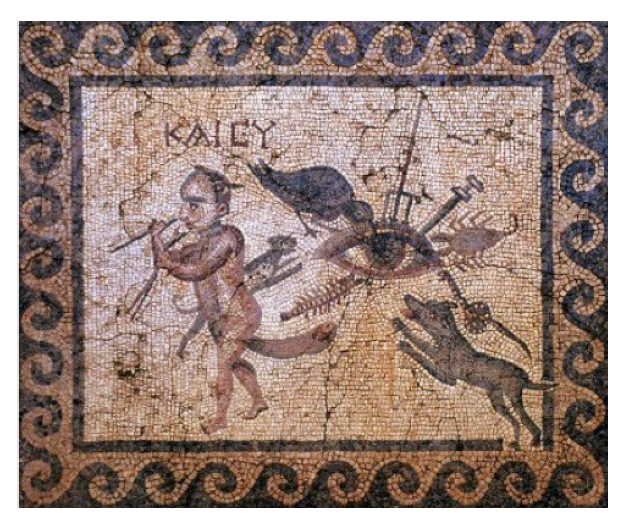
Extramission, Envy, and Evil Eye Amulets in Byzantium
Modern media utilize visual themes in a variety of ways, from the gruesome and impactful scene of cutting an eye in Dali and Luis Buñuel Portolés’s 1929 film An Andalusian Dog, to the iconic image in Stanley Kubrick’s 1972 film Clockwork Orange of a man forced to keep his eyes open by a steel contraption. Both of these scenes stay with the viewer far after the film has ended, as we can see from their continued usage decades after. This fear of the eye’s possibilities is not in any way limited to modern media, as we see in this floor mosaic from the doorway of a second-century AD house in Antioch.
Why do these beliefs persist? The visual theory of extramission may play a part in this continuation. According to this theory, vision is created by rays emanating from the eye. Connecting tactility with vision and extramission suggests the impact that the rays of sight may have on the world of the viewer. Strong ties between beliefs of the visual and the tactile can be seen through the lens of Byzantine ideas of vision, envy, and the evil eye.
SECTOR B
THESIS ADVISORS:
Robert St. George (HIST)
Robert Ousterhout (ARTH)

 Visual Studies
Visual Studies